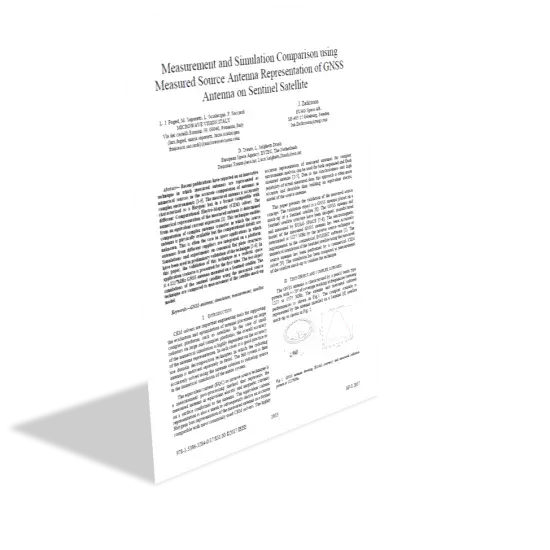
Recent publications have reported on an innovative technique in which measured antennas are represented as numerical sources in the accurate computation of antennas in complex environments.
The measured antenna is accurately characterized as a Huygens box in a format compatible with different Computational Electro-Magnetic (CEM) solvers. The numerical representation of the measured antenna is determined from an equivalent current expansion. This technique enables computation of complex antenna scenarios in which the source antenna is physically available but the computational details are unknown. This is often the case in space applications in which antennas from different suppliers are integrated on a platform. Simulations and experiments on canonical flat plate structures have been used in preliminary validation of the technique. In this paper, the validation of this technique in a realistic space application scenario is presented for the first time. The test object is a 1227 MHz GNSS antenna mounted on a Sentinel satellite. The simulations of the sentinel satellite using the measured source technique are compared to measurement of the satellite mock-up model.
